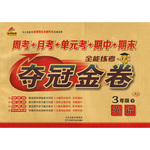题目内容
The Palm Islands are the largest artificial islands in the world and are under construction in Dubai, in the United Arab Emirates. They are being developed as tourist, leisure, and residential resorts, and will increase the coastline of the country by 120 kilometres.
After four years of planning and careful consideration of the environmental issues, construction started in 2001. Dutch engineers with experience of reclaiming land from the sea were employed in the building of the first two islands. The site for all three islands is an area of the sea where the water is not very deep. Sand is taken from the seabed and sprayed into the construction site. Although the shallow water facilitates this process, the islands are still very exposed to the currents and tidal movements of the sea. Rocks are used to hold the sand in place resulting in a large crescent (月状的) structure. This acts as a breakwater and protects the islands from the sea.
The first two islands are in the shape of date palm trees and consist of a trunk and 17 frond, or leaves coming off the trunk. The first island, named Palm Jumeirah, has three five-star hotels in the trunk, and luxury homes in the leaves. It is astonishing that when these homes went on sale in 2004, they were all sold within three days.
The second palm, Jebel Ali, was started in 2002 and is designed to be an entertainment centre. Six marinas (小游艇船坞) are planned, with a water theme park, and homes built on stilts (桩柱) in the water.
The Palm Deira planned to be the largest of the three islands, with a length of 14 km and a width of 8.5 km, an area larger than the city of Paris. It will consist of residential properties, marinas, shopping malls, sports facilities, and clubs. These will be open to both residents and tourists.
More artificial islands, the World Islands, are now being constructed near the Palm Jumeirah. They consist of 300 private islands grouped into the shape of the continents of the world and will be used for estates, private homes, community islands, and resorts.
Unquestionably, these artificial islands are one of the wonders of the modern world. They will also maintain Dubai’s status as one of the leading tourist destinations in the region.
1.According to the passage, all the following are right EXCEPT___________.
A.Some Dutch engineers are experienced in reclaiming land from the sea.
B.The islands are being built in the shallow water of the sea.
C.All the luxury homes on Palm Jumeirah were sold.
D.The World Islands are bigger than the Palm Jumeriah.
2.The underlined word “facilitates” in the second paragraph probably means___________.
A.holds back B.makes easier
C.slows down D.leads to
3.What is the passage written for?
A.To introduce the wonderful artificial islands.
B.To show how to build artificial islands.
C.To offer a travel service for tourists.
D.To prove the Palm Islands are the largest artificial islands in the world.
1.D
2.B
3.A
【解析】
试题分析:本文主要介绍了棕榈岛的建造以及各个小岛的景观。
1.the World Islands, are now being constructed near the Palm Jumeirah. They consist of 300 private islands grouped into the shape of the continents of the world只能推断出world岛屿正在Jumeirah岛附近建造,并且该岛由300座组成形状为世界的大洲的形状的私人岛屿组成,并无法说明world岛比Jumeirah岛大。故选D。
2.The site for all three islands is an area of the sea where the water is not very deep. Sand is taken from the seabed and sprayed into the construction site. Although the shallow water facilitates this process, the islands are still very exposed to the currents and tidal movements of the sea.句意为所有这三个岛的建造场地都是海的一部分,只不过那儿的水不深。人们从海底挖沙到建筑地,尽管浅水加速了这个过程,这些岛仍然遭受水流以及海中潮汐活动的侵蚀。可以得知浅水可以使人们挖沙比较容易,故选B。
3.Unquestionably, these artificial islands are one of the wonders of the modern world.句意为毫无疑问,这些人工岛是现代世界中的奇迹之一可以推断出本文是介绍伟大的人工岛,故选A。
考点:考查说明文阅读。

 夺冠金卷全能练考系列答案
夺冠金卷全能练考系列答案